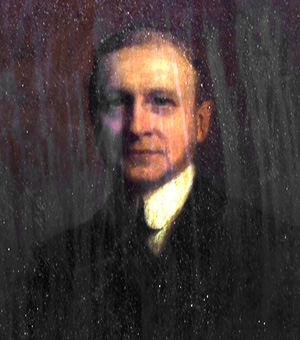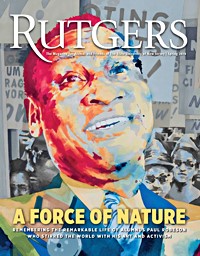William Henry Steele Demarest
Rutgers President, 1906 to 1924

William H.S. Demarest was born in Hudson, New York. He moved to New Brunswick in 1865, graduated from the Rutgers Grammar School in 1879 and immediately entered Rutgers College. As an undergraduate he was active as class secretary, vice president, and president; director and secretary of the athletic association; and a member of the Peripatric Club, class baseball and football teams, and the varsity baseball team. He was senior editor of the Targum, and the Class Day orator. In his senior year he was elected to Phi Beta Kappa, graduating from Rutgers with high honors in 1883.
From 1883 to 1886 Demarest taught in the Rutgers Preparatory School. In 1888 he graduated from the New Brunswick Theological Seminary, and that same year was ordained to the ministry of the Reformed Dutch Church. He served as pastor of the Reformed Church of Walden, New York, from 1888 to 1897, and pastor of the church in Catskill, New York, from 1897 to 1901. In 1901 he was appointed professor of ecclesiastical history and church government in the New Brunswick Theological Seminary, serving in that capacity for five years. In 1899 he became a trustee of Rutgers College and served as secretary of the board from 1904 to 1906. During the year 1905–1906 he was acting president of the college and was elected by the trustees to succeed Austin Scott as president in February 1906.
Throughout his administration, William Henry Steele Demarest—the first alumnus to become president of Rutgers—envisioned a dual role for the institution. One would be that of the state-supported university; the other, the small private college that the school had been throughout its history.
Rutgers changed significantly under Demarest’s stewardship and several milestones were achieved during his administration. In 1917 the Agricultural College was designated the State University of New Jersey. It was expanded and new facilities were constructed on the college farm. In 1918 the New Jersey College for Women was established. The undergraduate curriculum was restructured in 1907 and again in 1916 to keep abreast of the changing needs of the state and nation. Teacher-training courses were emphasized in the newly established Summer Session program in 1913. State and federal appropriations increased substantially, as did private gifts and alumni support. New facilities were constructed for instruction in engineering, chemistry, entomology, and ceramics; dormitories were built to accommodate the increased undergraduate population, which rose from 235 students in 1906 to 750 in 1924. Together with students in the women’s college, the Summer Session, the extension courses, and the short courses in agriculture, the total enrollment during Demarest’s last year in office was close to 2,500 students. Financial support in the form of state scholarships was extended during these years to include all undergraduates. In 1918 the college aided the war effort by establishing a unit of the Students Army Training Corps and established a War Service Bureau to communicate with the students, faculty, and alumni who served during the war.
Throughout his administration, Demarest envisioned a dual role for Rutgers. One would be that of the state-supported university; the other, the small private college that the school had been throughout its history. In the aftermath of World War I, the institution moved closer to becoming a public institution. In 1925 the college changed its name to Rutgers University. But by this time, William H.S. Demarest had submitted his resignation, which was effective on June 30, 1924.
Following his resignation, Demarest served for 10 years as president of the New Brunswick Theological Seminary and remained active in the affairs of the university. In 1924 he published History of Rutgers College, the first detailed history of the institution. William Henry Steele Demarest died on June 23, 1956. To quote Professor McCormick, “No son of Rutgers had ever been privileged to serve his alma mater with such loyalty and distinction.”
This biographical sketch was authored by Thomas J. Frusciano, Rutgers University Archivist. It originally appeared in The Journal of the Rutgers University Libraries.

